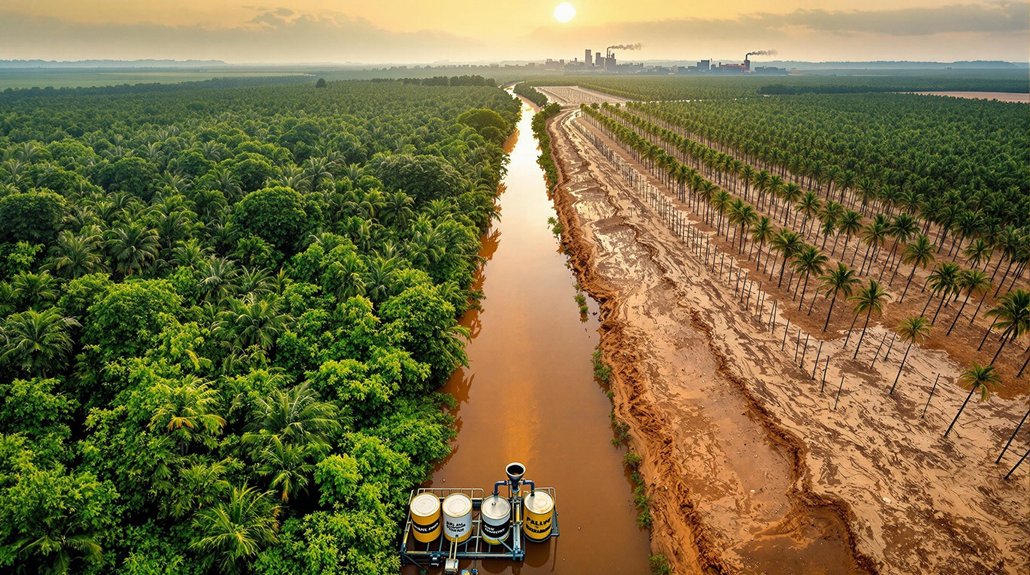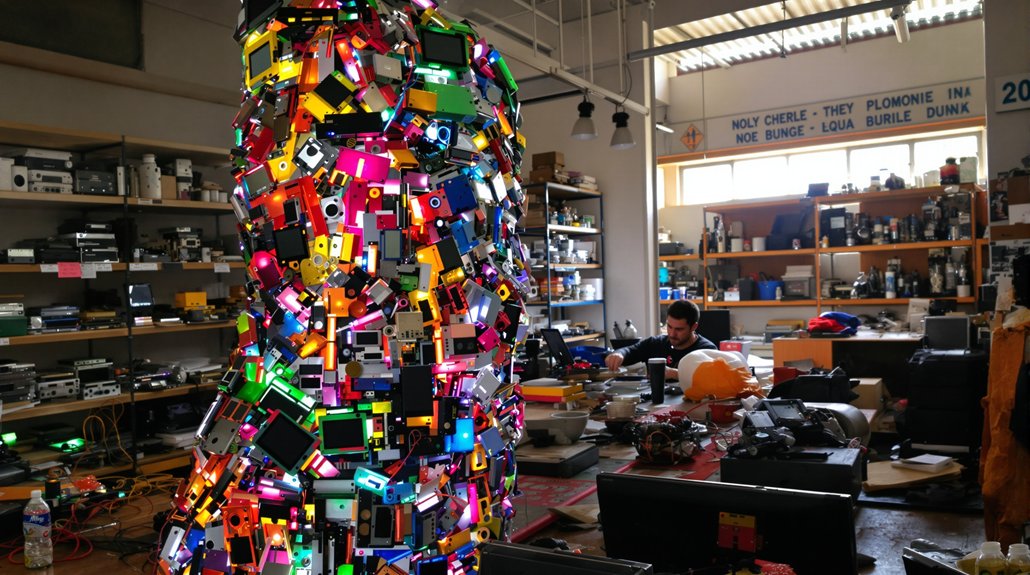Chicago’s Green Era Campus is changing how the city handles food waste. It’s turning 55 million pounds of scraps into energy and compost instead of sending them to landfills. The process uses special containers called anaerobic digesters. This project creates local jobs while fighting climate change. It’s not just about garbage—it’s about building a sustainable future. The campus shows how urban areas can turn a messy problem into a clean solution.
While many cities struggle with food waste management, Chicago is leading a green transformation through its innovative Green Era Campus initiative. Built on a nine-acre remediated site, this facility features a state-of-the-art anaerobic digester that’s changing how the city handles its food waste problem.
Chicago generates about 451,000 tons of food waste annually. Instead of sending this waste to landfills, the Green Era Campus collects inedible food that can’t be donated to food pantries. The campus partners with local restaurants, food companies, and retailers like Mariano’s supermarket chain, which contributes approximately 1 million pounds of food waste.
Chicago transforms food waste into opportunity, diverting 451,000 tons from landfills through innovative partnerships with local businesses.
The anaerobic digester is the heart of the operation. It uses microbes to transform thousands of tons of food waste into two valuable products: nutrient-rich compost and biogas. This pipeline-ready biogas serves as a renewable energy source, while the compost supports urban farming.
Green Era plans to use this compost on its seven-acre farm, including a two-acre vertical farm managed by Urban Growers Collective. This vertical farm alone is expected to produce 26,000 pounds of local food per year. The initiative aims to divert 55 million pounds of food waste monthly from reaching landfills. The campus will also provide affordable compost to other urban farmers, creating a closed-loop system of local food production.
The environmental benefits are significant. The project reduces landfill waste and greenhouse gas emissions while producing renewable energy and commercial-grade fertilizer. Similar to geothermal energy, this process offers minimal land use compared to other renewable energy solutions. It also supports local food production, which cuts transportation emissions and demonstrates circular economy principles in action. This innovative approach has helped avoid nearly 1 million pounds of carbon emissions, significantly improving air quality in the region.
The economic impact is equally impressive. The initiative creates green industry jobs for local residents, supports a worker-owned cooperative, and generates revenue from compost sales. It reduces dependency on traditional energy sources and creates value from materials previously considered waste.
The Green Era Campus serves as a model for other cities. It shows how waste-to-energy technologies and public-private partnerships can address urban sustainability challenges while benefiting local communities.
References
- https://www.greenerachicago.org
- https://www.energytech.com/renewables/article/55280612/chicago-supermarkets-food-waste-program-proving-trash-is-energy
- https://www.triplepundit.com/story/2025/chicago-food-waste-anaerobic-digester/821026
- https://nextcity.org/urbanist-news/a-unique-bioenergy-project-fueled-by-food-waste-fuels-community-connections
- https://teatropicadilly.com.ar/the-silent-revolution-how-chicagos-food-waste-begins-a-new-life-as-energy-and-compost/








